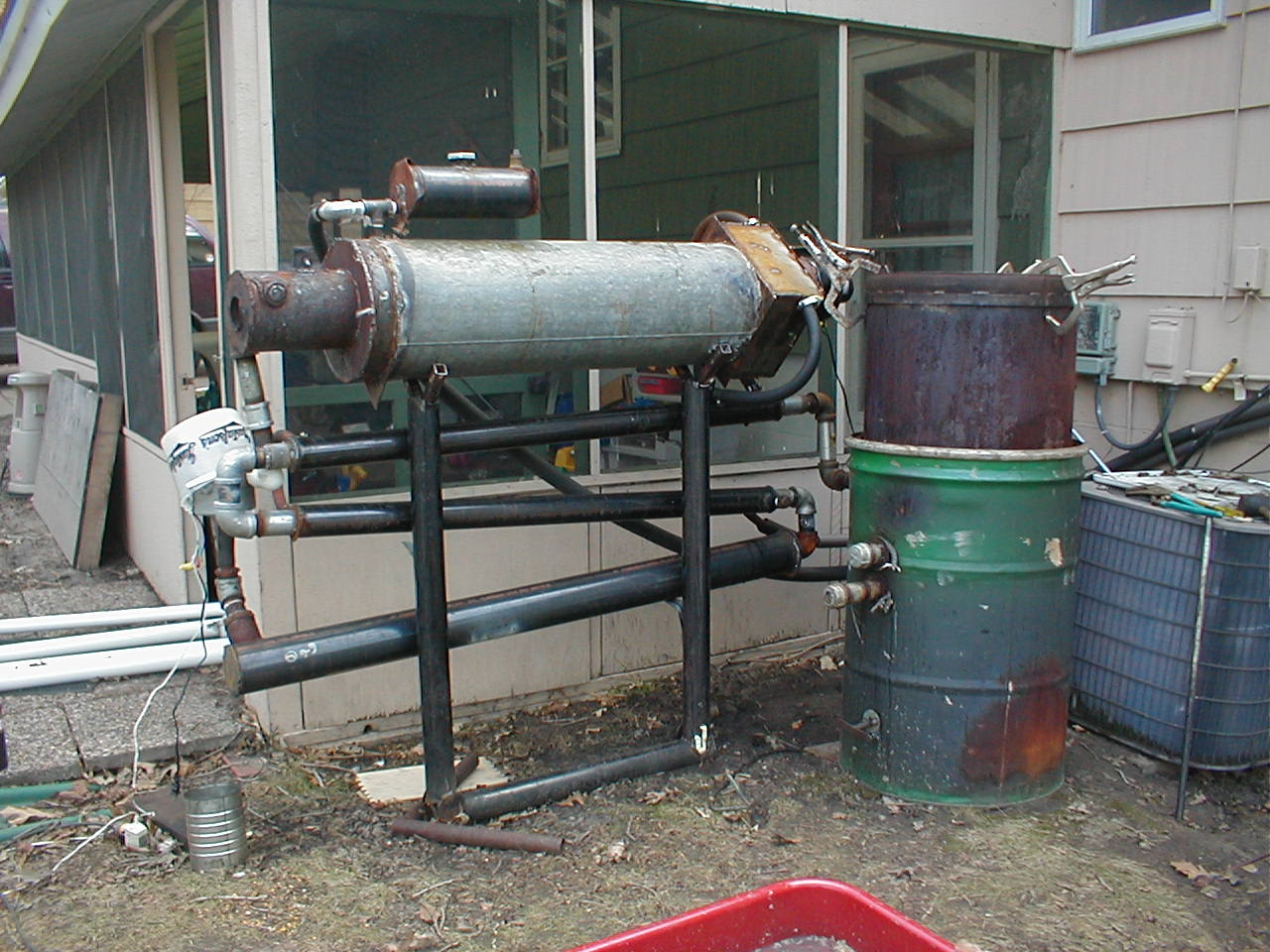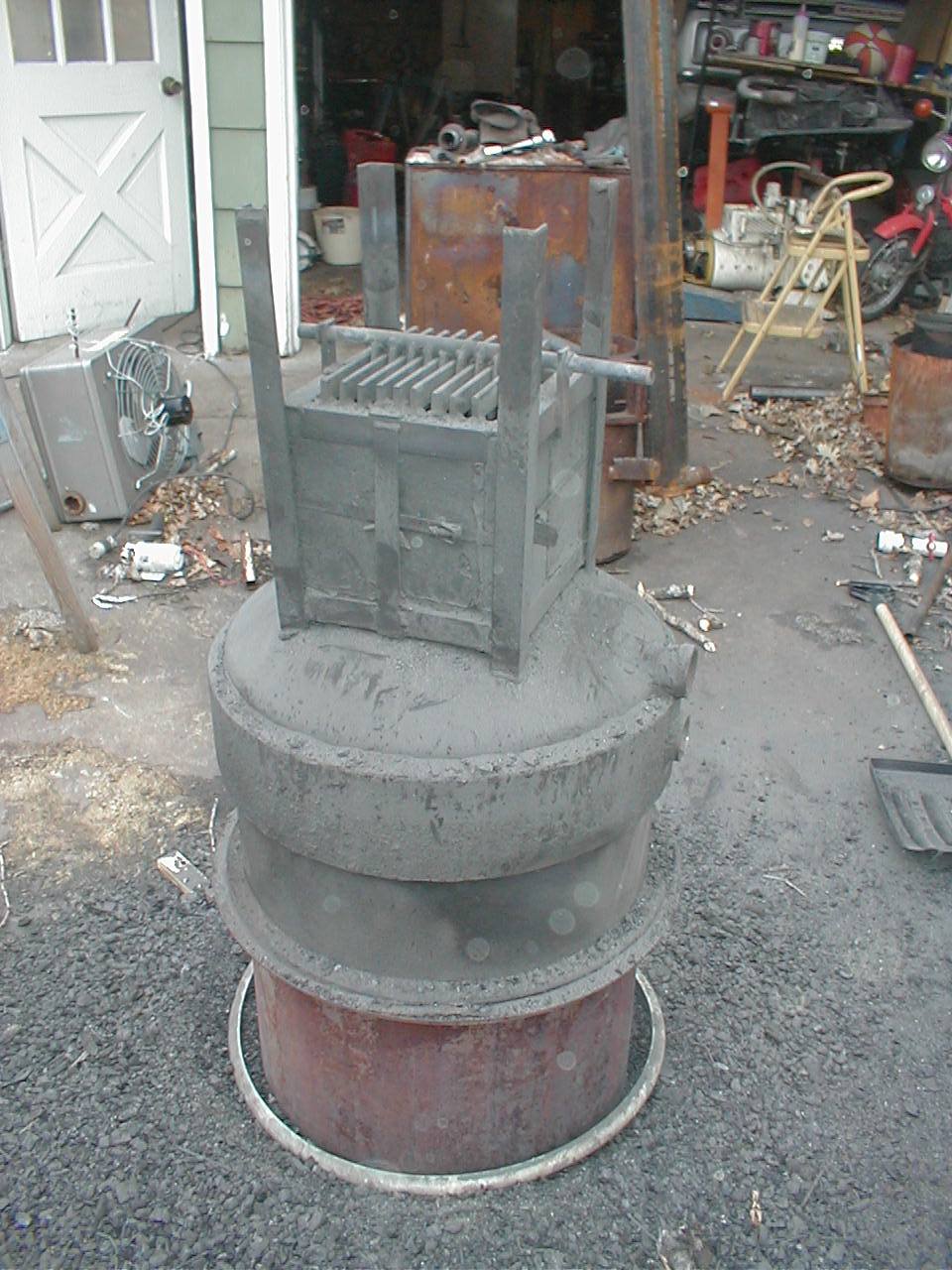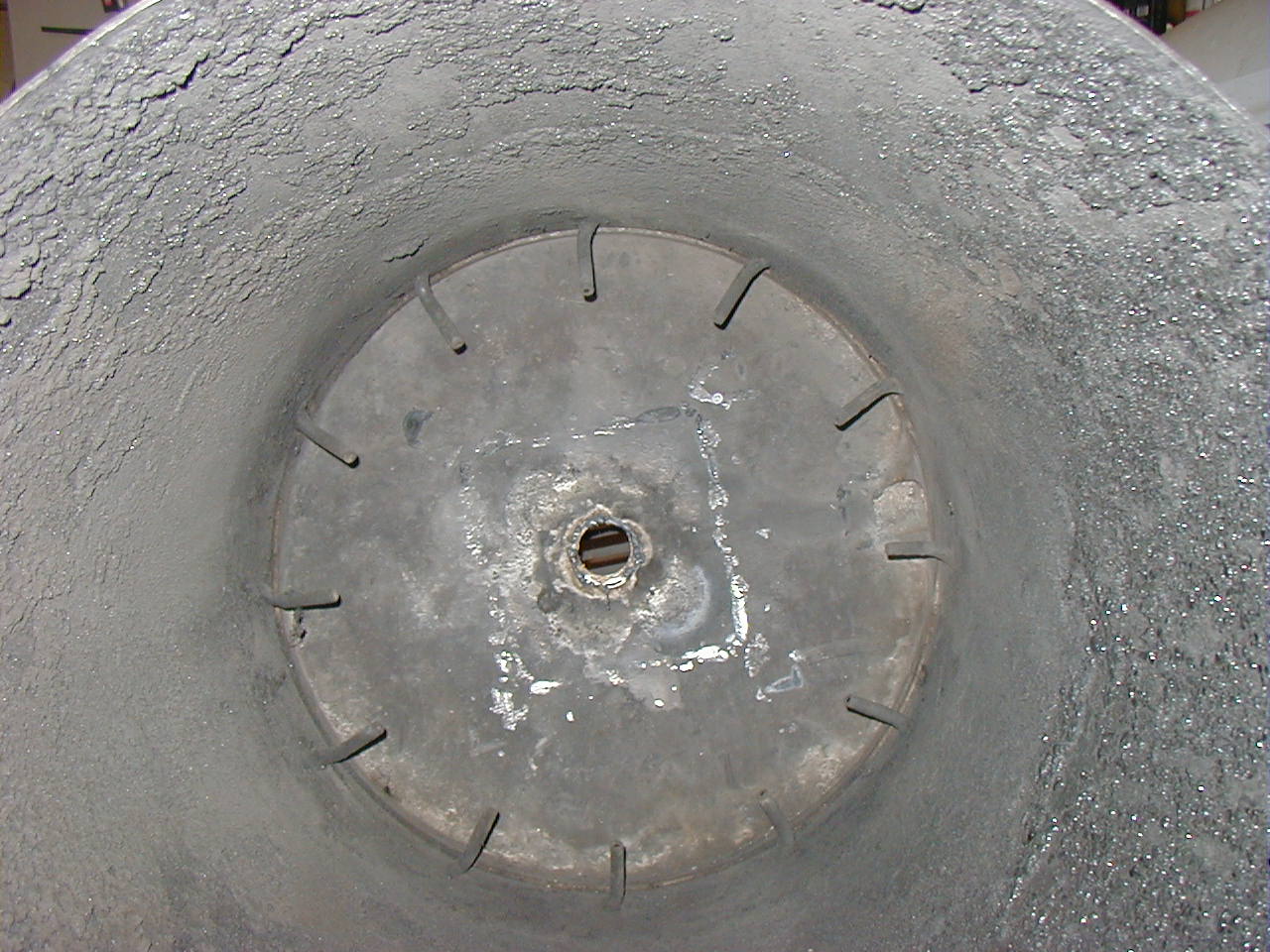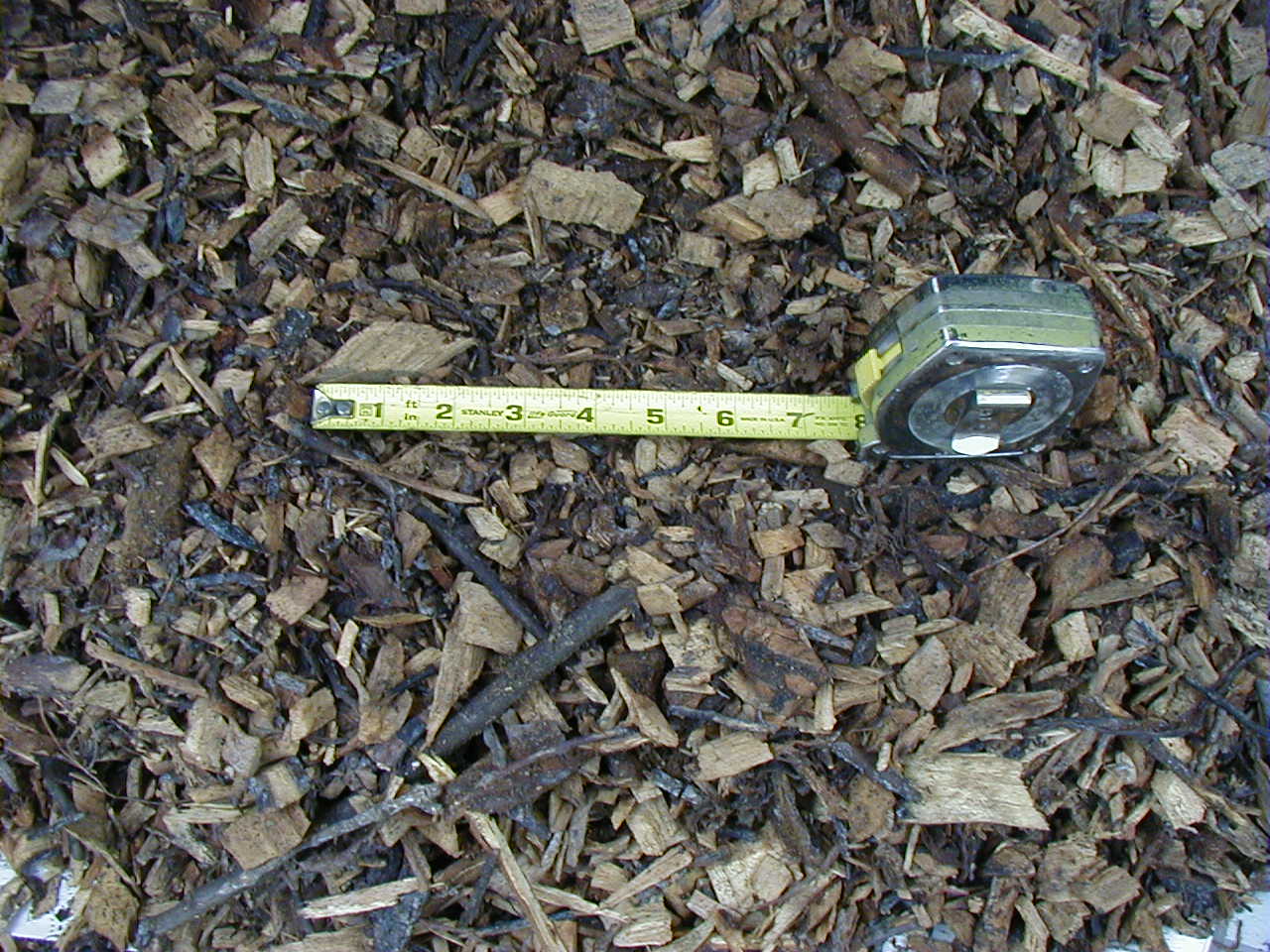GASIFIER DEVELOPMENT
Garret Crisler, December 12, 2004

The gasifier is on the right side. The ports on the side of
the barrel are, upper - air inlet and the lower one is the ignition port. The
producer gas is pulled off the unit in the back in the top, about level with the
upper ring on the green barrel. The gas then flows into the upper tube which
is a water cooled moisture condenser, the gas then flow down into the
middle tube which is the same as the upper tube. Then into the lower tube which
is simply an air cooled pipe to remove more of the moisture. The suction is
provided by a high end vacuum cleaner type blower which is under the white pail
on the left side. The producer gas is then blown up into the burner. This burner
works well, the gas is blown in the side and swirls around, air enters the end
of the burner and mixes with the producer gas and is ignited by a ceramic
igniter like in a clothes drier or natural gas oven. This works great. The
flames are then sucked into the galvanized tank which has seven 2.5" steel tubes
running the length of it. The hot gases exit the right end of the tank and
across a heat core salvaged for a car. There is a squirrel cage fan on the far
right end of the system which draws the hot air through the tubes and across the
heater core and then it will eventually be connected to a stack to get the
exhaust above the house.

Here is a shot of the internals of the gasifier. The unit is
upside down. The rusty part is the part that holds the unburned wood scraps, The
air manifold is towards the bottom of the tank. The fire hearth is the bottom of
the barrel with the fire box below that. The fire box is made from fire bricks
with a grate on the bottom. The four legs hold the unit off the bottom of
the barrel to allow room for the ashes.
Here is the inside of the gasifier. The throat is about 2" in
diameter, there are 12 nozzles with a 1/4" id. They are about 5" above the
throat. The bottom of the tank is the only cone that directs the charcoal down
to the throat.
I am interested in converting this system gasifier to burn
wood chips, here is a picture of the proposed fuel.
The chips from ground up trees that the city places in piles
around the Minneapolis, Minnesota city. I talked with the person in charge
of the project and she stated during the winter months the chips are fairly dry
because there are no leaves and the sap goes into the roots during the winter
months.
Next winter I am planning on producing electricity. I haven't
the time to get the whole system up and working this year. My main goal is
heating my house.
Any advice regarding modifications and auger supply systems
that others have sucesfully used would be of great help. The burner produces
about 90,000 BTU/hr. of hot water.
Thanks in advance.
Garret Crisler
GCRISLER@mn.rr.com




